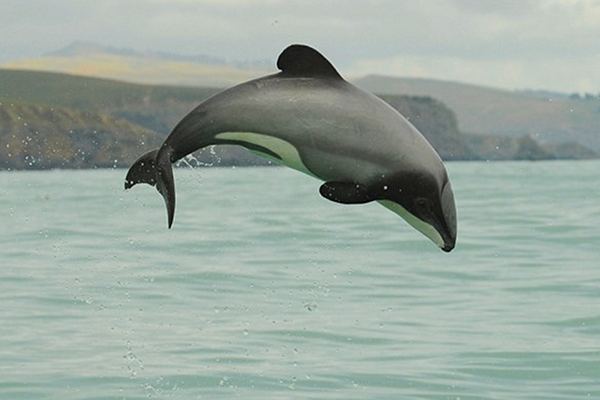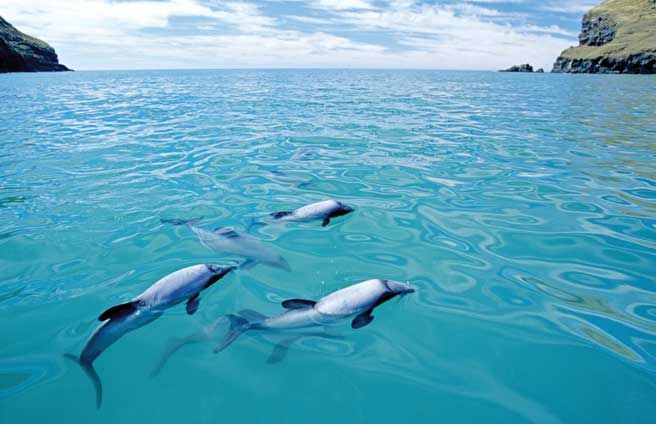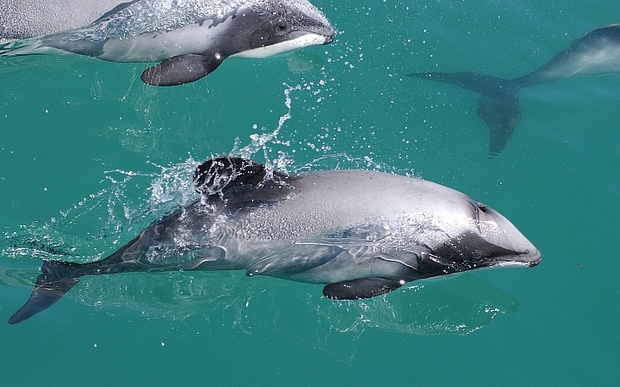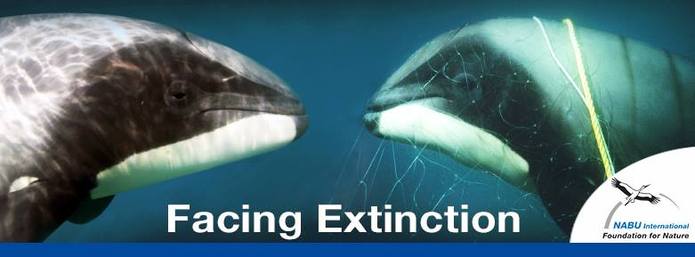
SPECIES: Maui dolphin (Cephalorhynchus hectori maui)
CURRENT RANGE: West Coast of North Island, New Zealand
CURRENT THREATS: Fisheries, oil exploration, inbreeding, disease.
CONSERVATION STATUS: Critically Endangered
WHERE YOU CAN SEE THEM: Occasionally between Manukau Harbour and Port Waikato, North Island, New Zealand.

What is a Maui Dolphin?
The Maui dolphin is a tiny dolphin that is endemic to New Zealand. This beautiful cetacean is also the world’s smallest dolphin and rarest subspecies of dolphin, growing to a maximum length of 1.5 m (4.9 ft).
These dolphins have distinctive markings with black, white and grey coloration and a short snout. Their dorsal fin is rounded, almost looking like a Mickey Mouse ear popping out of the water. A playful, social creature that lives in small pods, they can be seen chasing each other, playing with seaweed and blowing water bubbles. They tend to live in shallow water, close to shore for protection from large predators.
It was discovered in 2002 that the Maui dolphin was a subspecies of the Hector’s dolphin. The Hector’s dolphin is found off the South Island in contrast to the North Island dwelling Maui. Analysis of their skeletons as well as mitochondrial and nuclear DNA proved that the two dolphins are genetically distinct. This type of genetic difference over such a small geographical range has never been observed in any other species of marine mammal.

Why is the Maui Dolphin endangered?
Set netting and trawling are the principal threats for these animals. Set netting is practiced close to shore and around harbors where these dolphins frequent. The dolphins are unable to detect the fine filaments of the net in the water and get caught and drown. Accidental bycatch in these nets as well as in trawling has decimated the species.
Scientists such as Liz Slooten in New Zealand have estimated that there has been a decline in the population of 93% over 3 generations between 1970 and 2009. Numbers dropped from approximately 100 in 2004 to 55 in 2012. The current number is said to be fewer than 47 individuals.
Of the remaining dolphins, it is believed that there are only approximately 10 females of breeding age left. With such a small number of potential breeding females, the loss of even one female is a significant blow to the species. Females only start breeding between the age of 7 to 9 and will have one calf every 3-4 years. The small number of animals can also lead to a genetic bottleneck which leaves these dolphins susceptible to diseases, birth deformities and higher mortality rates.
Disease outbreaks of Brucellosis and Toxoplasmosis are an additional, potential problem for this vulnerable population. Notwithstanding the accelerated and worrying loss of these creatures, insufficient protective measures are in place to help their recovery.

What’s being done to save the Maui Dolphin?
Despite calls from scientists, conservationists and the general public to create a larger exclusion zone for these dolphins, large areas of habitat are still exposed to various threats.
The New Zealand government has banned the use of set netting in some areas, but has resisted measures to further increase the protective zone for these dolphins claiming that they are not found in the areas where there is a supposed threat. The government opened up 3,000 sq km of the West Coast North Island Marine Mammal Sanctuary for oil drilling in 2014. This area is the main habitat for the Maui’s and comprises a quarter of the whole sanctuary.
Conservation organisations such as NABU, the International Whaling Commission and WWF New Zealand have lobbied extensively to safeguard these dolphins. Current recommendations are to have a full ban on gill netting and trawling in all areas where Maui’s are found.
It is predicted with the current decline in the Maui population, that they could be extinct within the next 15 years.
Written by Suzanne Burns.
Source: Green Global Travel